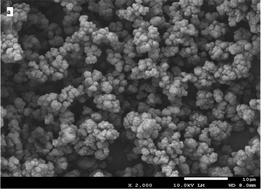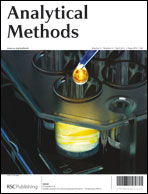A simple and efficient method for preparation of a strong cation exchange monolith and its application to separation of HSA
Abstract
A strong cation exchange monolithic column was prepared by a single step in situ radical polymerization without further chemical modification for high performance liquid chromatography (HPLC). The novel monolithic column used vinyl ester resin as the monomer, ethylene glycol dimethacrylate (EDMA) as the cross linking agent, 2,2′-azobisisobutyronitrile (AIBN) as the initiating agent, NaHSO3 both as inorganic adjunct and coadunate initiator (L. G. Bai, H. Y. Liu, Y. K. Liu, J. Chromatogr. A, 2010, 1218, 100-106, and F. A. Zhang, C. L. Yu, X. H. Zhu, C. Wei, Polym. Adv. Technol., 2006, 17, 608–611). Moreover, NaHSO3 can supply sulfonic acid groups as cation exchangers for ion-exchange monolithic column. Polymerization conditions and separation conditions were optimized, and the structure properties of the monoliths were also investigated. In addition, the chromatographic performance of the monolith was evaluated through separating human serum albumin (HSA) from human plasma in conjunction with HPLC and the expected results were acquired. The effects of buffer concentration and pH on the separation of HSA were investigated. Furthermore, the monolith was used to separate the mixture of protein (hemoglobin and HSA) with good resolution.


 Please wait while we load your content...
Please wait while we load your content...